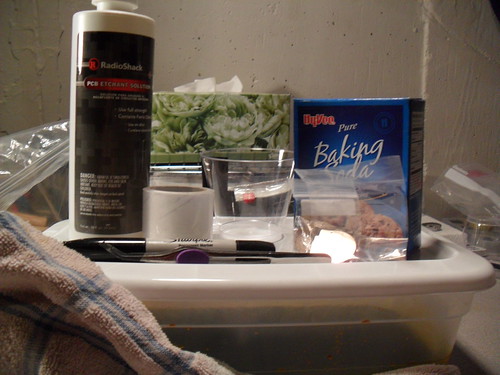
PCB Etchant - Radio Shack
Baking Soda - grocery store
Packing Tape
Sharpie
tweezers
towel
a couple of plastic containers
metal blanks or sheet metal
rubber gloves
For this method you want your metal to be copper or a copper alloy. This will not work well on sterling silver. The silver colored blanks I have, not real silver.
So, start by pouring your PCB etchant into a large plastic container with a lid.
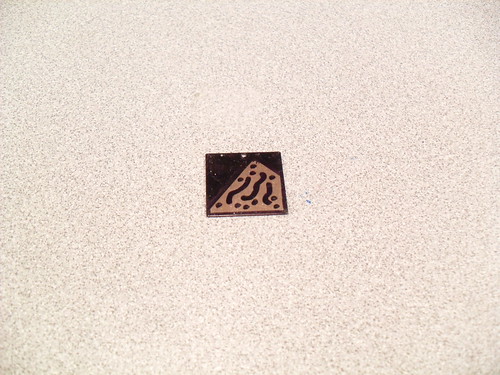
Next, clean a metal blank and then use a sharpie to draw your pattern on it. Remember, the etchant will work on the parts you leave blank. Make sure that you also use the sharpie on the edges of the blank and the inside of the pre-drilled hole.
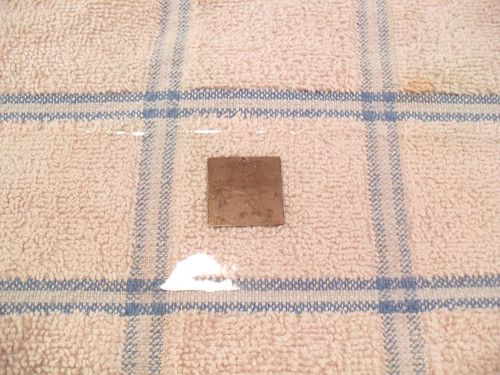
Once you are happy with your drawing, place the blank, drawing down, on the towel. Pull off enough tape to go across your container while draping into the etchant. I fold over each end of the tape, about 1/2 inch. Place the tape over the metal blank and the towel. The reason to place the tape on the towel is to get rid of some of the stickiness. You will be using the tape to suspend the metal blank in the etchant, and you will want to be able to remove it from the container without too much resistance, to prevent splashing the etchant. The fuzziness of the towel will help with this.
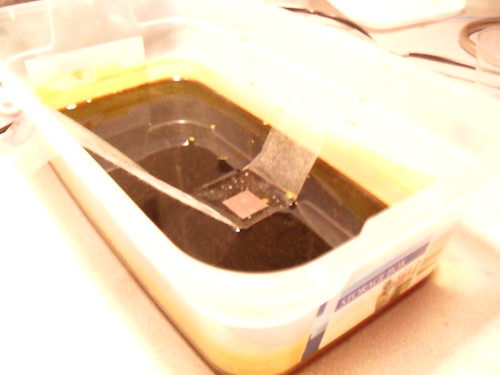
Now you suspend the blank. You want it hanging into the etchant. You will want to check it every 5-10 minutes to see if it has etched deep enough. Depending on how old your etchant is, this may happen quickly or slowly. Be warned, if you leave it in too long, you could etch all the way through the metal. Which can actually be a cool effect if that is what you are looking for.
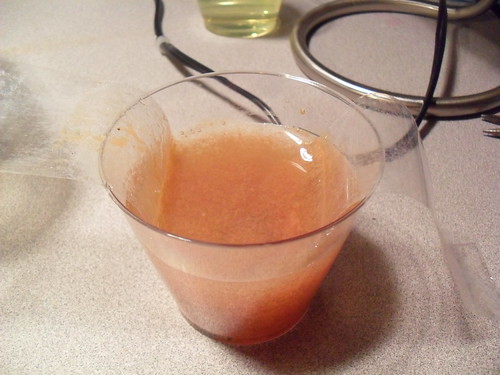
So, once the etch is as deep as you want it, you will remove the tape from the etch container and dip the whole thing in a container of water and baking soda. Technically, this etchant states you can rinse with just water, but I like to use the baking soda just to make sure it is thoroughly neutralized. There will be foaming.
Once it is done foaming, you can wipe it off and peal your blank from the tape. You can then use some acetone fingernail polish to remove the sharpie. Final result:
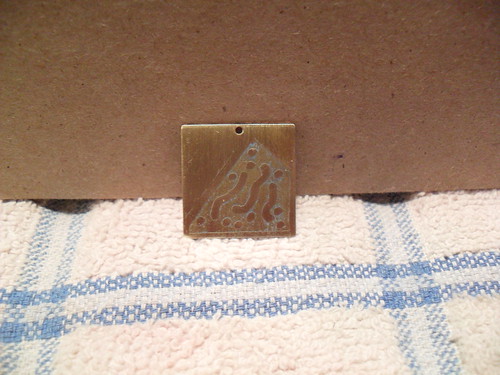
Once you have etched the metal, you can stop there, or you can use various techniques to patina the metal.
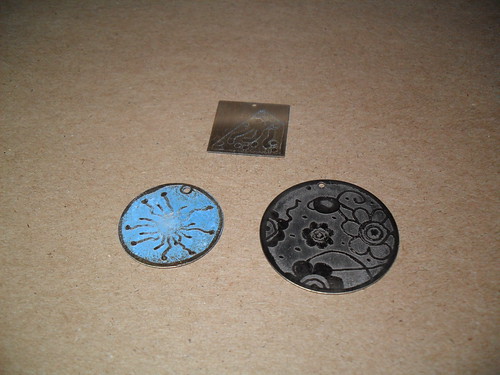
Note on storage and disposal: The etchant can be stored and resused multiple times. The baking soda mixture can be rinsed down the drain. Store all chemicals on low, locked shelves. Why low shelves? 'Cause you can't drop caustic chemicals on your head if they are in a low shelf.
Quote: "I was on the prowl for Mr. Right Now. I had met Jim at a political fundraiser. After a while of talking and a couple of cocktails, he asked if I wanted to see his etchings. We went to his condo and he showed me real etchings and drawings. An hour later he took me home and I never saw him again." Paulette

